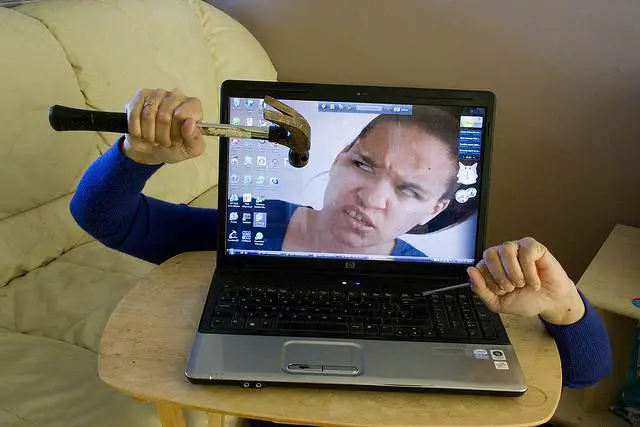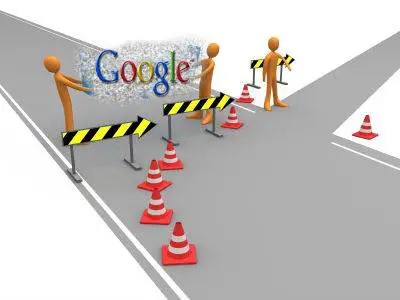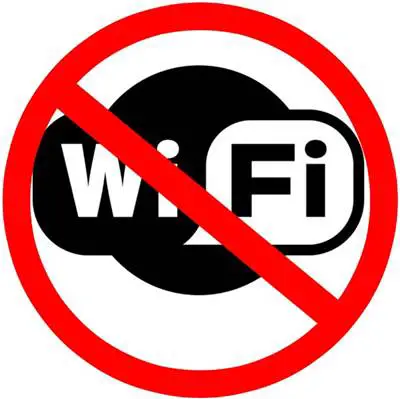No matter what computer you happen to be dealing with, there will inevitably come a time when you have to deal with computer problems. Seeking technical support whenever this happens can not only prove costly, but may not always be necessary and you might want to consider to fix some common computer and tech problems yourself.
According to some of the best online tech support services in the business, most common computer and tech problems could be fixed by users themselves. Here we take a look at some of these common computer problems and solutions for how you can fix them on your own.

A Simple Restart Sometimes Works Wonders
Sometimes all a malfunctioning system needs is a simple restart, which is super easy to do. Running a Windows Update can also sometimes fix computer problems, because it provides users with important fixes for bugs that can really improve computer performance. Check your devices too, and disconnect and reconnect anything that could possibly be the culprit. Try all of these solutions before resorting to a computer technician to save yourself some money.
How to Fix These Computer Problems Yourself:
1. A Sluggish Computer

Sometimes when dealing with such frustrations as videos that buffer at a snail’s pace, or slowly loading webpages, it is not the fault of the computer. These problems might actually be caused by a poor broadband connection.
One way to fix this computer problem is to run some simple checks to see if it actually might be the PC itself causing the slowness include making sure that there is enough available free space on the hard drive. If you find that your hard drive is pretty clogged up, this may be the culprit. The solution is to perform a few hard disk maintenance tasks such as freeing up some hard disk space will certainly help to make your machine run more efficiently once again.
Next, go into the System Configuration box by clicking on the Windows logo on your task bar and typing in “msconfig” in the box, then press “enter”. Choose the Startup option with the System Configuration box and take a look at the items that are checked. These are the applications that are automatically launching when the computer is started. The more applications opening upon start up, the slower the performance of the computer.
Disable anything unnecessary such as Spotify, Google Update, etc. Be sure not to check anything associated with the Microsoft Corporation or anything else of importance such as your antivirus program. If in doubt about the important of a certain checked object, it may be best to leave it alone and stick with the ones you are certain about. After you’ve disabled all unnecessary start up items, reboot the machine and you should notice improved speed and performance.
Read also: Boost Computer Speed While Staying On Budget
2. Downloading is Taking Way Too Long

You can perform a simple test to check your computer’s download and uploading speeds by visiting SpeedTest.net.
Your result should show at least 50% of what your Internet provider has advertised as their performance speed, and your ping result should be less than 100 milliseconds. If this checks out okay, your culprit might be a download torrent program operating in the background, which slows things down substantially.
You can also check to see if your network card has any new updates available. If that is the case, download the latest driver to help improve download speeds.
Other common download problems may involve the modem or router. Reset the modem or router by disconnecting it for a couple of seconds, then plugging it back in promptly. If all else fails, contact your Internet service provider, as there may be a connection problem on their end that they can reset for you.
Read also: How to Improve A Slow Internet Connection
3. Fix Computer Spontaneous Restarting Problems
If restarting issues are the problem, first make certain these are not routine restarts such as those that occur with Windows updates. After you have ruled this out, work on updating your drivers for the motherboard, network card, and graphics card.
Other issues such as overheating, an adware infection, or a virus may also be behind such computer problems in restarting.
If you are noticing strange noises in addition to the restarting, this could mean that the computer require a thorough cleaning to solve the problem.
Read also: Why Does My Computer Shut Off By Itself Unexpectedly? – Common Causes and Fixes
4. Pop-Up Ads Keep Popping Up
This is probably one of the most annoying computer problems but you can definitely fix it. Pop-ups that keep occurring are typically the sign of adware. You may have inadvertently installed this on your computer any number of ways. The many system utility tools offered online to clean up adware rarely truly take care of the problem. To deal with this problem, perform a full computer scan on your machine using a reputable antivirus program. Find and remove the adware with your antivirus if possible. If this fails, then try downloading a malware removal program and disable the antivirus before running the program.
If you’re having problems pinpointing the exact type of adware, search reputable tech sites or forums about what you are experiencing. Chances are, other PC users are dealing with this too and the site may offer step by step instructions for removal of a particular threat. To be extra safe, run more than one antivirus or anti-malware program separately, to ensure you’ve cleared the infection.
5. Your Browser Looks Odd

If you’ve noticed something isn’t quite right about your browser, your computer may have fallen victim to browser highjacking. These are an especially scary type of malware infection that takes over your browsing and searching and can lead you to misleading web pages designed to cause more infections to your system or even compromise your personal information.
Using a reliable real-time antivirus is important, as well as watching what you download. These infections can come bundled with some downloads you might get online. If the antivirus fails to prevent an infection use the antivirus and an anti-malware program to remove the culprit. The browser should also be uninstalled and then reinstalled.
6. Security Certificate Issues
Many times when PC users receive the message that there is a problem with a website’s security certificate, it is simply a result of the system’s clock being incorrect. Security certificates are synced with the clock of the computer and if the battery for the clock of your computer is older it might cause this issue. Simply click the clock in the system tray and adjust the settings of date and time and it should resolve most of these issues.
7. Repeatedly Disconnecting From Wi-Fi

Problems with wireless connections can be caused by everything from the ISP, to the router, to the computer itself. To fix this, make sure the wireless card on your computer has the latest drivers and try troubleshooting problems with connections by clicking on the Wi-Fi icon on the task bar of the machine.
Another culprit may be the location where you are using the computer. Some areas, even within the same house, receive much weaker signals than others. So in order to keep your Wi-Fi within range, you might try switching locations to see if this resolves the problem.
8. Printer Problems
Most printer issues involve having out-of-date printer drivers. Sometimes turning the printer off then back on will resolve printing issues. Also, check that there is enough ink and paper for the printer to perform. Check the print queue and see if the printer is online and to check it’s current status. Be sure that the “Use printer offline” option has not been checked. In the case of a clogged inkjet printer, you can refer to this article for the tips on how to clear the stubborn clog away.
9. Unable to Open Email Attachments
Many times if you are unable to open an attachment in an email , it is because you do not have the proper software. This is very common with file extensions such as .pdf. In these cases, you can simply download a free PDF reader online. For other problematic file types, look at the three letters in the file extension and then search for a program that opens these types of files.
10. Certain Programs Not Working With A New PC
If a former program you used with another PC is no longer working, you may need to download certain required plug-ins such as Flash or Java. Or, in some instances, it may be your former software that is not compatible with the newer computer. This is especially true of older programs when attempting to use them on a new PC.
11. The Black Screen Issue
The computer screen turning black is one of the most common problems that you can try to fix. Please read the causes of laptop black screen and how you can fix it yourself.
When All Else Fails, Get Help!
If these simple fixes are not working to resolve your problem, or if you encounter something you are not comfortable attempting on your own, by all means call a qualified computer technician. You may also wish to do this if you are fearful of attempting something yourself which will in turn void any warranty you may have on your computer.
The Bottom Line: How to Fix Common Computer Problems Yourself
There are many computer problems that can be easily fixed right from home, without having to call in an expert. Try these simple fixes first to save yourself money and hassle.
Here are the common computer problems you can fix on your own:
- A Sluggish Computer
- Downloading is Taking Way Too Long
- Spontaneous Restarting
- Pop-Up Ads Keep Popping Up
- Browser Looks Odd
- Security Certificate Issues
- Repeatedly Disconnecting from Wi-Fi
- Printer Problems
- Unable to Open Email Attachments
- Certain Programs Not Working With A New PC
- The Black Screen
Read also: Simple Fixes for Laptop Keyboard Problems

Hi Sir
Yesterday evening , I did a clean Windows (Win 8) installation , everything is okay . But in Firefox , whenever I open a new tab , a web page appears to me named AVG secure search instead of a blank tab . I tried every possible way to get rid of this problem but I failed . Please can you help me to solve this problem ?
Exit from Firefox. Go to Control Panel-> Uninstall a program-> Right click on AVG and select Change-> Select Change on the Add/Remove feature from the setup-> Click Next-> Uncheck AVG toolbar and AVG Secure Search (if you see the AVG End User License Agreement in this section, you should check it, else just proceed to next). After that just let your system setup configured and this should get rid of AVG Secure Search. Try it and see if this works. Good luck!
The biggest problems that I’ve been having from your list are a sluggish computer and pop-ups. Thanks for the great tips, I’m going to put them to good use. I’ve also heard that cleaning up a corrupted registry can speed up a computer, and to try it if you’ve done everything else and it’s still slow and it’s not your internet connection that’s the problem.
There are so many reasons that could cause a sluggish computer. Junky CPU and RAM, having too many start-up programs, virus and the list goes on… Cleaning registry will certainly make your system runs faster as it holds all the information regarding updates, install and un-install which need to be cleared from time to time in order to free up resources and space.
Years ago in the good old windows xp days and earlier I swear I would restart my computer numerous times per day, which usually cleared something out and sped it back up.
Since Windows 7 I rarely have a problem like that anymore. Maybe a couple times in 2-3 years now at most.
You never know though. Computers are great when they are running smooth, but things happen. Sometimes it’s a simple fix, and other times you wrack your brain for hours trying to figure out where the problem lies.
Yeah I didn’t get that many issues with my computer since using Windows 7 too. Hope it will stay that way fingers crossed!
Thanks, Peter! A simple reboot often works wonders. I remember back in the day when my brother also showed me how to boot up in safe mode.
Simple things sometimes work wonders. 🙂
Browser hijacking just seems to be too common! Ugh! And sometimes we give permission because we don’t read the fine print when installing software. My advice – read the TOS for everything you install. If it says it wants to install toolbars, just say NO!
I agree! Often times computer problems occurred mainly due to us not reading things carefully or just skipped reading totally.
Hi Peter 🙂 After a long time, I got the chance to visit my favorite blogs and your one is always on top of the list! This article attracted my mind because I have been facing one issue with my new laptop and for that I have contacted the company.
The problem is with my graphics card. I have tried all kinds of drivers for it, but from the very 1st day it has never worked! It just gives error 43 in the device manager.
I wished there was a solution to this here! But well, looks like the last step is the only thing I can do!
Nice to see you here, Mahaveer! Where have you been? 🙂 Well if all things failed, just bring it to the pro. I hope you will get your graphic card problem sorted out soon.
Sometimes my PC shows my printer is offline even though my printer is turned on, and I’m pretty sure my printer program is installed correctly. Fortunately, this problem disappears once I restart my PC, but it comes back every now and then. I will try doing a driver update then!
Make sure it’s not a loose cable connection as well.
It is easy to give up and call for help when facing a computer problem. I have to say in my experience, a simple reboot is all that is needed to fix the issue.
That’s almost a spontaneous action that most computer users would do when they face with computer problems, and most often.., it works 🙂
My brother recommended me to use ad-aware to remove all those nasty pop-ups, which somehow keeps happening to me. Maybe I should lay off the shady video sites a little. LOL.
We tend to get those nasty pop-ups more easily on those sites. Yes you should not hang around on those sites too much go watch National Geographic instead 🙂
I keep getting a blue screen shutdown on my HP laptop and I don’t know what to do about it. I have heard that it can be caused by many things; is it time to get rid of my laptop or is there some help for it? Maybe a new hard drive or more memory?
Sounds like a “Blue Screen of Death” issue to me. For how to fix BSOD, read this article.
Whenever I’m experiencing any PC errors I always try to find a solution by myself before resorting to asking the shop where I got my laptop from, because they seem to overcomplicate things and it also costs me extra money. Lately I’ve been experiencing lots of issues with Windows 8 so I got fed up and downgraded to Windows 7 and couldn’t be happier.
Overheating is the biggest culprit for me but I remember reading in one of your articles that it is a worse problem in older laptops so hoping next time it won’t be an issue.
I love how much this site teaches me. It is making me much more confident in dealing with my own laptop issues.